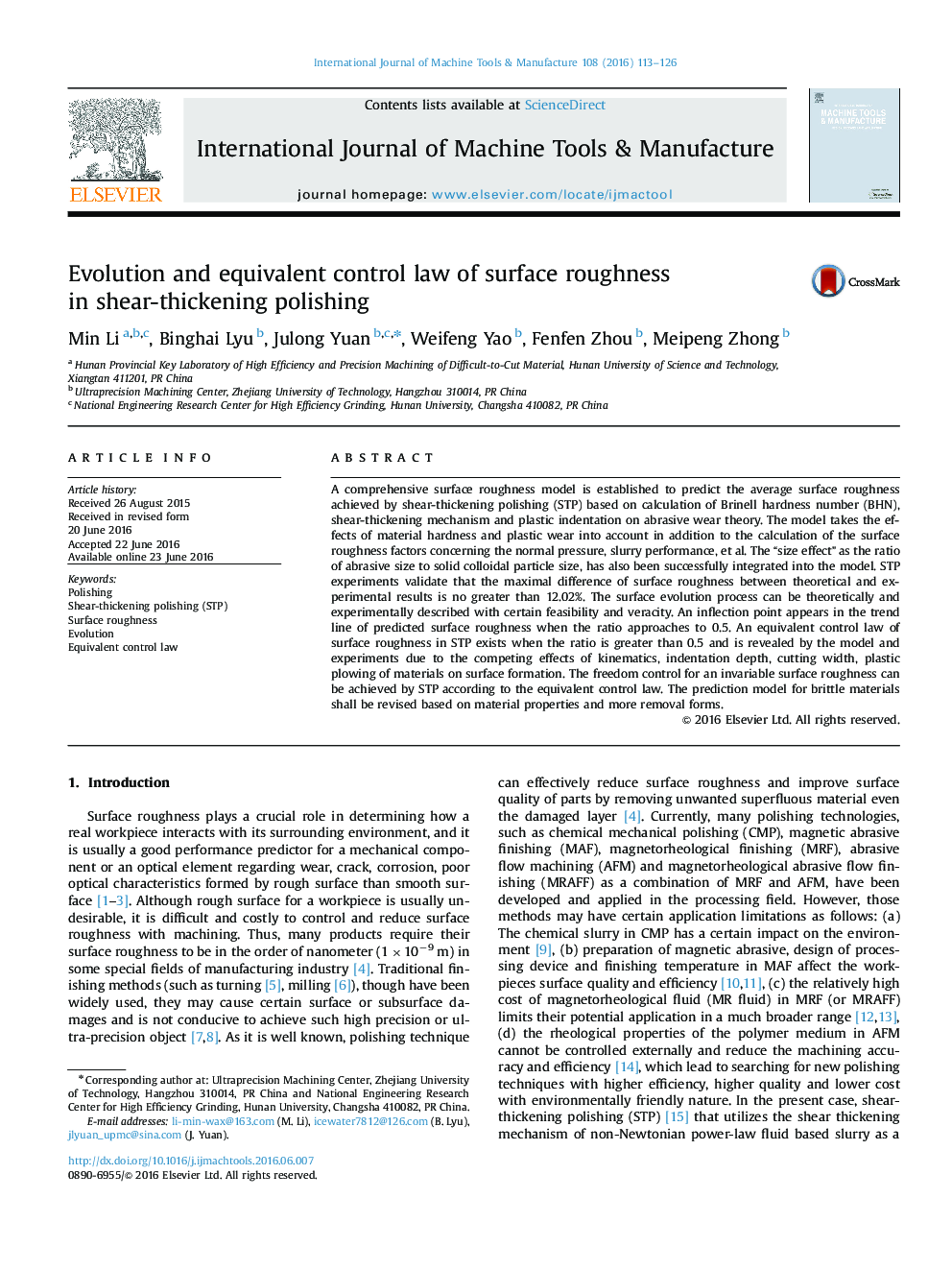| Article ID | Journal | Published Year | Pages | File Type |
|---|---|---|---|---|
| 780418 | International Journal of Machine Tools and Manufacture | 2016 | 14 Pages |
•A model is established to predict the average surface roughness achieved by STP.•"Size effect" as the ratio Da/Dp has been successfully integrated into the model.•Surface evolution process can be described with certain feasibility and veracity.•An equivalent control law of surface roughness in STP exists (when Da/Dp>0.5).•Freedom control for an invariable surface roughness can be achieved by STP.
A comprehensive surface roughness model is established to predict the average surface roughness achieved by shear-thickening polishing (STP) based on calculation of Brinell hardness number (BHN), shear-thickening mechanism and plastic indentation on abrasive wear theory. The model takes the effects of material hardness and plastic wear into account in addition to the calculation of the surface roughness factors concerning the normal pressure, slurry performance, et al. The “size effect” as the ratio of abrasive size to solid colloidal particle size, has also been successfully integrated into the model. STP experiments validate that the maximal difference of surface roughness between theoretical and experimental results is no greater than 12.02%. The surface evolution process can be theoretically and experimentally described with certain feasibility and veracity. An inflection point appears in the trend line of predicted surface roughness when the ratio approaches to 0.5. An equivalent control law of surface roughness in STP exists when the ratio is greater than 0.5 and is revealed by the model and experiments due to the competing effects of kinematics, indentation depth, cutting width, plastic plowing of materials on surface formation. The freedom control for an invariable surface roughness can be achieved by STP according to the equivalent control law. The prediction model for brittle materials shall be revised based on material properties and more removal forms.
